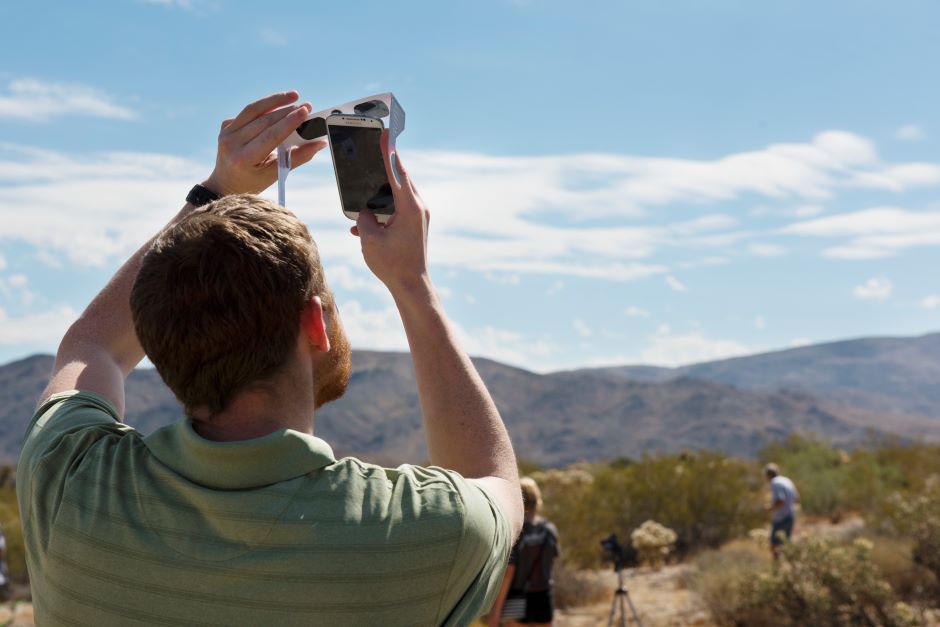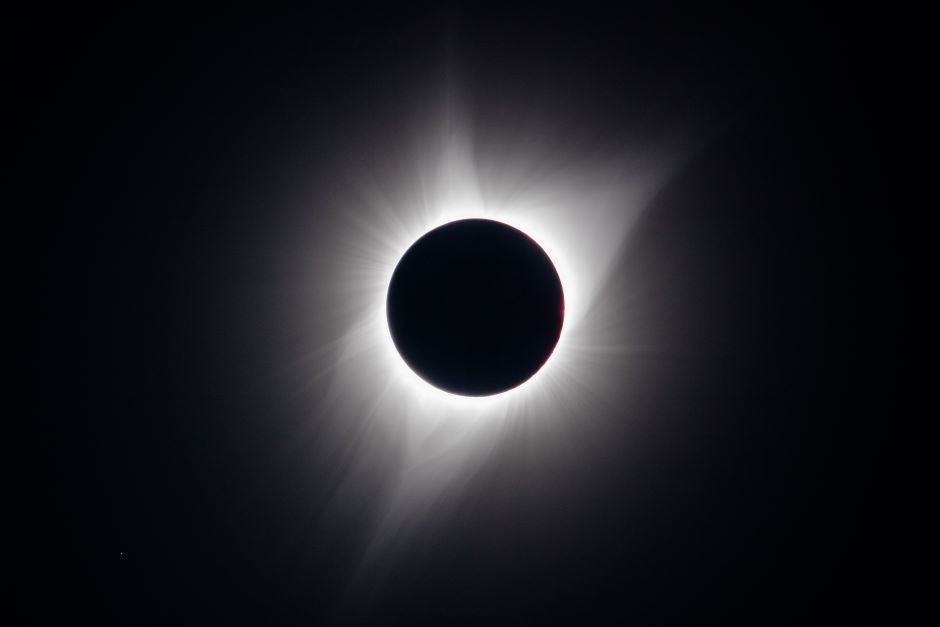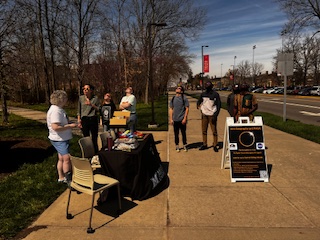Soundscapes of the Solar Eclipse: Citizen Science Supporting National Research
 Solar Eclipse Viewing Event (Credit: Hannah Schwalbe / NPS via Flickr Public Domain)
Solar Eclipse Viewing Event (Credit: Hannah Schwalbe / NPS via Flickr Public Domain)On April 8, 2024, millions of people around the world had their eyes glued to the sky to witness a historic cosmic event. The total solar eclipse captured the headlines and the minds of many who became eager to gaze at the heavens as the sky went dark for a few minutes. However, not everyone used their sense of sight during the eclipse, some were listening to the sounds of the natural world around them as the light faded from above.
The Eclipse Soundscape Project is a NASA-funded citizen science project that focuses on studying how the annular solar eclipse on October 14, 2023, and the April 8, 2024 total solar eclipse impacted life on Earth.
The project revisits an initiative from the 1930s that showed animals and insects are affected by solar eclipses. Now equipped with modern technology and communication, the Eclipse Soundscape Project plans to collect many more data points and contribute to the growing field of soundscape ecology.
The project called on participants to observe and record the sounds and other changes in wildlife before, during, and after the totality, relying on the work of citizen scientists and institutional partners across North America to collect data. The project had over 3,000 participants submit data, much more than the 498 observations from the 1932 solar eclipse.
One of the institutions promoting this project was Miami University, located in the path of totality about an hour north of Cincinnati. Susan Jakubowski, an associate professor of geography, said the Department of Geography was looking for a way to engage students scientifically during the eclipse and decided that participating in an already existing and funded project would be the best way.
“It was done by NASA and we kind of just added ourselves,” said Jakubowski. “We thought it would be good, we could be kind of the conduit between the students and this project that they might not otherwise know [about].”

Taken near Craters of the Moon National Monument & Preserve (Credit: Jacob W. Frank / NPS via Flickr Public Domain)
Solar Eclipse Soundscape Data Collection
Different levels of participation were offered for the project, including some that used technology such as AudioMoth recording devices, but due to the time needed to sign up for that level, Miami’s Geography Department opted to do the observer role.
This level consisted of faculty handing out forms to interested students who could then utilize quieter spaces around campus to observe changes in wildlife sounds 10 minutes before, during, and 10 minutes after totality, which could then be uploaded to the website by the students themselves.
“We did a very low-tech version, which was just a form [saying], what are the crickets doing? What are the birds doing? What are the frogs doing?” said Natalie Teale, an assistant professor of geography who discovered and led the project at Miami.
Engaging Students with Citizen Science
Teale explained that within the Department of Geography, there has been a push to get students more involved in scientific research, and she believes citizen science is a great method to start out.
It is often a low barrier to entry, and a university can provide the means to get there before a student may want to take on full-fledged research. With such a historic natural phenomenon occurring right over Miami’s campus, Teale believed it was a perfect opportunity to engage students.
Moreover, the Eclipse Soundscape Project is funded by NASA and led by researchers from across the country. Teale hoped that the scale of the project would attract students interested in an alternative way to experience the eclipse on Miami’s campus that day. After promoting the project in the days leading up to the eclipse, over 20 students stopped by their booth outside the geography building to pick up their observation forms.
“They get to be part of something that’s way bigger than just Miami. Now they can say that they contributed to a NASA-funded study,” Teale said.
As an undergrad at Syracuse University, Teale herself participated in citizen science projects at neighboring universities. She has been encouraged by the growing popularity of this method of carrying out scientific research and hopes that more college students will see it as an opportunity to engage with the scientific community.
“How cool would it be if we could just get a culture of everyone participating in the next generation [of citizen science]?” Teale said.

Students gather at an informational table focusing on the solar eclipse soundscapes project (Credit: Susan Jakubowski)
Conclusion
Participants uploaded data through April 15 and the data is currently being analyzed and compiled by the team at Eclipse Soundscapes and will be open to the public for long-term data circulation. The data will be available on Zenodo.org through a link on the Eclipse Soundscape website.
This project serves as a reminder of the usefulness and publicity that can arise when studies engage a wider audience through citizen science. Once-in-a-lifetime solar eclipses are rare. Yet the opportunity to use unique scientific events and natural phenomena and harness the help of eager citizen scientists is a growing field that should be considered by environmental and ecological researchers.




0 comments